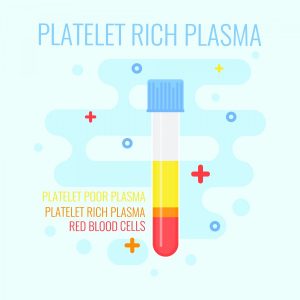Athletes engaging in sports often experience injuries to the muscles, tendons and ligaments. Due to frequent use, the shoulder, elbow, knee and ankle-joints are more susceptible to musculoskeletal soft tissue injuries than other joints. Musculoskeletal injuries account for about 30 percent of annual visits to primary physicians in the United States. Traditional treatments have included analgesics and anti-inflammatories, intra-articular corticosteroids joint injections, physical therapy, bracing and surgery, each of which have been met with mixed results.
 In the continuous quest for better therapies, platelet rich plasma (PRP) has emerged an alternative treatment to the traditional therapies. PRP refers to a concentrated solution of platelets isolated from a patient’s own blood, which can be injected into a site of injury. Because platelets produce growth factors, PRP is thought to assist with tissue repair and regeneration by activating the body’s own natural healing pathways. However, questions remain regarding the safety and efficacy profile of this intervention.
In the continuous quest for better therapies, platelet rich plasma (PRP) has emerged an alternative treatment to the traditional therapies. PRP refers to a concentrated solution of platelets isolated from a patient’s own blood, which can be injected into a site of injury. Because platelets produce growth factors, PRP is thought to assist with tissue repair and regeneration by activating the body’s own natural healing pathways. However, questions remain regarding the safety and efficacy profile of this intervention.
PRP has received wide acclaim in the media, with an increase in regenerative medicine centers across the country investing in and using this therapy. A review of the literature suggests that use of PRP is still in the experimental phase. A Cochrane review of 19 trials spanning eight types of injuries — shoulder, elbows, knee ligaments, patellar tendons andAchilles tendons — indicates that the current quality of evidence for PRP remains very low.
There are no standardized methods of preparation or protocols for application of PRP, which has resulted in a wide variability in the quality of PRP products being administered to patients. One study found weak evidence for a slight benefit in short-term pain relief (3-months), but no improvements in overall joint function. Overall, most studies found no significant differences in benefits or adverse events among people receiving PRP compared to those who did not. In general, side effects were mild, and included local tenderness and pain, which resolved typically within two days of the procedure.
For specific conditions, PRP showed minor benefits among individuals with elbow injuries. Improved therapeutic outcomes for knee osteoarthritis were also limited with only mild benefits in younger patients who did not have advanced osteoarthritis. For Achilles and patellar tendon injuries, it was suggested that PRP may have some benefits in delaying the time until surgery was required, but did not yield any long-term functional outcomes.
Overall, it appears that high-quality evidence supporting the use of PRP for various joint conditions and injuries remains to be established and more research is needed to standardize treatment regimens and to monitor treatment outcomes.
In the midst of reimbursement cuts in healthcare, it remains expedient to keep evaluating the proposed benefits and related outcomes of using PRP. As commercial interests and public appeal of PRP continues to increase, outlining the long term safety and effectiveness profile of PRP will prove instructive for clinicians and help allay concerns about the utility of PRP for patients with sports-related and chronic musculoskeletal conditions.